Discuss about the Advantages and Disadvantages of Cloud Computing.
With the paradigm shift experienced in information and communication technology (ICT or IT), cloud computing has emerged as a global phenomenon, spreading its wing over a wide horizon. The term ‘cloud computing’ has become a part-and-parcel of modern multinational business corporations (MNCs) such as Apple, IBM, Google, and Amazon and so on. With the monumental development of internet and computational technologies, coupled with mobile technologies, cloud computing has emerged as an omnipotent and omnipresent phenomena. Keeping aside the commercial intent, cloud computing has also ushered significant benefits for general utility, for example in healthcare sector. Therefore, the following sections will critically discuss in detail the different modes of use and the beneficial as well as negative outcomes yielded by cloud computing.
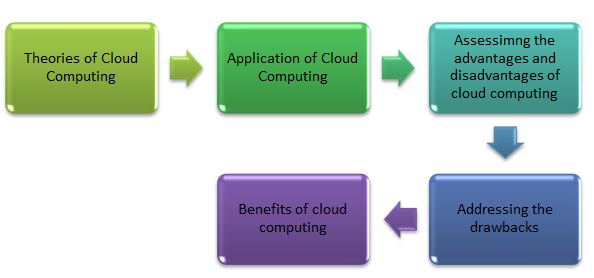
Figure 1: Conceptual Framework
(Source: Kavis, 20144, p.242)
Kavis (2014, p.129) has defined cloud computing as delivering the computing services through the internet. In other words, cloud computing is involved in delivering on-demand computing resources through internet on a pay-for-use contract. Generally, the services provided through cloud computing spans over a wide horizon such as servers, databases, storages, analytics, storages, software application and many more. Pearson (2013, p.18) has mentioned core elements of cloud computing as-
Pay-per-use
Using as per the nature and time of requirement
Third-party provided service
Zero change in ownership of the original property (intellectual or physical)
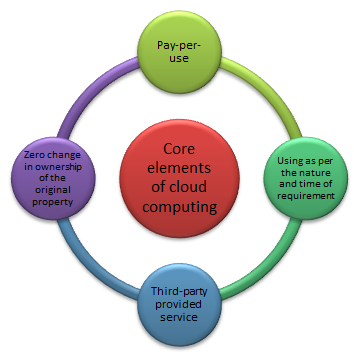
Figure 2: Core elements of cloud computing
(Source: Pearson 2013, p.12)
From this perspective, cloud computing can be termed as an unique service that can allow multiple users to gain access in a specific project simultaneously without jeopardising the functionality or security protocols of a network infrastructure, that too irrespective of geographical borders or time.
The origin of term ‘cloud computing’ is itself shrouded in cloud as there is no specific mention of this term in history. The initial schematics of cloud computing referred to the use of internet in connecting several computers and the term ‘cloud’ was used there as a metaphor for inter-connectivity irrespective of space and time (Rittinghouse and Ransome, 2016, p.177). The cloud symbol was fort formally used in ARPANET in the early 1977s and later service resembling cloud computing was also used by CSNET in 1981. However, both these instances predate the formal origin of internet, therefore scholars are sceptic whether to define such usage as a proper ‘cloud computing’ or not.
Defining cloud computing
A major step in the evolutionary landscape of cloud computing was realised during 1960s with the popularisation of Remote Job Entry (RJE). Remote service providing vendors such as IBM and DEC popularised this terminology (Ibm.com, 2017). Later, in the 1990s, offering of Virtual Private Network services by telecommunications companies gained significance popularity. Such services were available at a lower cost and allowed users to switch traffic for maintaining the balance of servers (Fernández et al. 2014, p.385). The first modern appearances of term ‘cloud computing’ traced in a Compaq internal document.
Since 2000, cloud computing service ballooned and started to be used for commercial purpose, which was earlier used by governmental agencies such as NASA. Finally, with the introduction of Elastic Compute Cloud by Amazon in 2006, this computing service was introduced to common public and since then cloud computing has gained continuous momentum (Hwang et al. 2013, p.167).
The theoretical standpoint of cloud computing can be best understood through a critical evaluation of major cloud service models. It can also help to ascertain the types of cloud services and thus comprehend the benefits and challenges associated with each of them. Fernando et al (2013, p.86) has identified three major types of cloud services frequently used in contemporary world - IaaS, SaaS and PaaS model. However, it should be noted that there are also several other services models used in the arena of cloud computing. Data Analytics as a service is one major example in this regard.
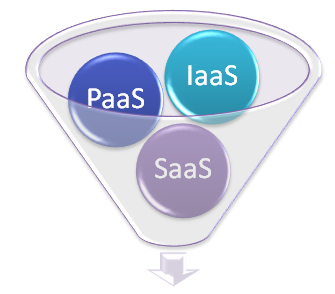
Figure 4: Three Major Cloud Service Models
(Source: Fernando et al. 2013, p.85)
One of the most rudimentary form of cloud computing, IaaS allows users to rent information technology infrastructure such as servers and networks, storage, operating system, virtual machines tec. As per Kavis (2014, p.165), IaaS involves a pay-per-use service and is the main benefit lies in the absence of investing a large amount of resource for building hardware. In addition, as the services are available for rent, the providers can supply flexible as well as informative services based on clients’ demands.
Despite the advantages, IaaS is the most expensive mode of cloud computing and the client has to take care of backup system regularly. A prominent example of this type of cloud service is Amazon WS service.
In the opinion of Al-Roomi et al. (2013, p.95), PaaS is a special type of cloud computing service that provides on-demand cloud -based environment to clients where they can develop, test, deliver and manage a wide range of software applications. Such service is beneficial for developers as it allows them to freely develop applications minus the headache over managing entire infrastructure. One major drawback of PaaS is that the user has virtually no control over the platform and has to depend solely on cloud provider.
Exploring the evolution of cloud computing
Google’s App Engine can be cited as a suitable example for this type of cloud computing service.
As per Dinh et al. (2013, p.1589), SaaS allows the delivery of software applications through internet, generally in a subscription based mode. In this type of service, cloud service providers host, manage and undertakes the maintenance of software application and associated infrastructure. In this way, users can relish the benefits of using upgraded software applications without worrying about information loss. Hashem et al. (2015, p.99) has criticises this platform as the user is not authorised to add or modify any features, thus posing a limitation in application. Google Docs, a cloud-based document editor application is one famous example of SaaS.
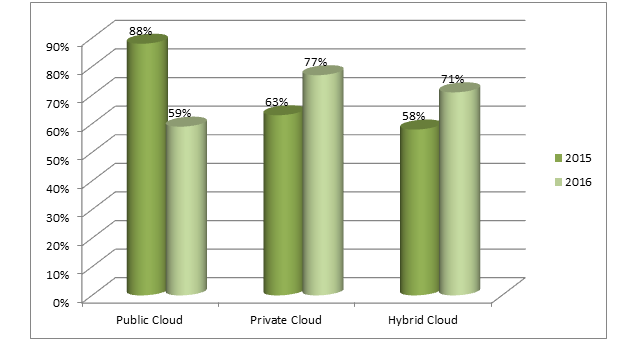
Figure 5: Adoption of Cloud Computing services
(Sources: Rittinghouse and Ransome, 2016, p.172)
These models are deployed into service through several forms. As commented by Oliveira et al. (2014, p.498), major deployment models include public cloud, community cloud, private cloud and hybrid cloud. Public cloud generally employs a SaaS mode and Google is a notable example of this type of cloud. On the other hand, private clouds are managed by private entities and maintenance of such cloud often involves high expense, owing to integrated firewall services. The disadvantages of these two cloud services were averted in hybrid cloud, where elements of private, public and community cloud services have been effectively blended in (Avram, 2014, p.530). This type of cloud service allows the movement of information an application between public and private clouds. CRM software platforms can be cited as an example of hybrid cloud.
Now that most commonly used models of cloud computing and associated cloud services has been critically discussed, it is imperative to speculate the benefits provided by those cloud services, along with the challenges posed by them.
As Avram (2014, p.529) has commented, cloud computing has revolutionised the business process by incorporating IT resources into it. As a result, contemporary organisations, irrespective of their nature and purpose, churn huge benefit from implementing cloud computing. Major benefits have been penned down in the following points-
Cost efficiency
As per Sicari et al. (2014, p.148), cloud computing is undoubtedly the most cost-effective mode of technology to be used in wide array of scenarios. Cloud computing has enabled organisation to cut down their capital expense involved in setting up IT infrastructure and its maintenance. Consequently, the costs for ensuring continuous power and cooling have also been transferred in other productive purposes. Furthermore, this service is also available at comparatively cheaper rate and clients can render this service as per their specific needs and requirements, thus saving cost from investing in unnecessary applications.
Critically analyzing the theoretical underpinnings of cloud computing
Speed
As most of cloud computing service providers supply self-service features, vast amount of information of resources can be processesed within a very short span of time. Sultan (2014, p.180) has stated that the added speed available in cloud computing service grants medical business greater flexibility and thus reduces the pressure associated with capacity planning.
Global presence
cloud computing services, not being limited to any physical IT infrastructure, grants greater elasticity to business in terms of scaling (Ibm.com, 2015). This helps individuals working from different corners of the world to smoothly collaborate with each other without much hassle.
Increased productivity and performance
IT industry often involves typical time consuming IT chores such as setting up hardware, software patching and so on. Fortunately, cloud computing has reduced the need for such activities and allowed IT organizations to focus on pursuing their business goals - thus increasing both organisational performance and productivity.
Better reliability
With the options of online storage, backup and recovery, cloud computing has increased the reliability and security of information (Azure.microsoft.com, 2017). As cloud service providers are responsible manage the security patching, user can store sensitive information without worrying much. Furthermore, the provision of data mirroring also grants additional layer of security in case information is lost from one host.
Automated software upgradation and integration
Another major benefit associated with cloud computing is that software used by users are automatically integrated in the cloud platforms, thus removing the additional effort of an user to customise the application s per personal requirement.
Scalability and flexibility
Assunção et al. (2014, p.12) has stated that cloud computing assist organisations to utilize additional resources as per their requirements, this amplifying the organisational productivity. Through the provision of easy resource sharing, organizational activities become more flexible and management can easily scale the outcomes of every activity efficiently.
Automated and focussed approach
Dinh et al. (2013, p.1595) has commented that cloud computing has enabled organisations to automate their processes so that data management requirements are addressed effectively. In turn, this has allowed resource sharing smoother and organisations can now focus on their productive activities such as research and development (R&D) more effectively.
Contrary to numerous advantages, cloud computing also incorporates several major threats that can be considered as it disadvantages. They are-
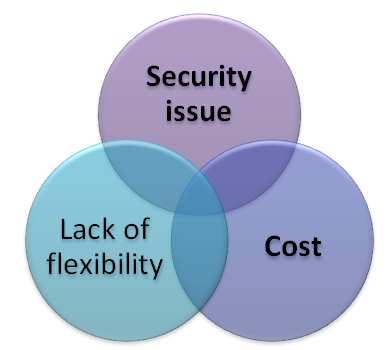
Figure 5: Major disadvantages of cloud computing
(Source: Kshetri 2013, p.372)
Security issue
In the opinion of Kshetri (2013, p.373), security concern is the major drawback of cloud computing. As in most of cases users cannot put additional encryption to the stored information, any malicious agent such as hacker can easily gain access to that information. Such cases are more prevalent where cloud service providers are not capable of augmenting highly efficient firewall mechanism. Furthermore, cloud-service provide a by a third-party provider often involves the risk of entire data loss if the service provider runs into any cyber-attack. Therefore it is recommended to the beneficiaries to carefully evaluate the security service provided in the cloud platform.
Infrastructure as a service (IaaS)
Cost
Although cloud computing may appear as cost-effective from the surface, it is often just tip-of-the-iceberg. Once an organisation shifts into cloud computing, it is virtually impossible to revert back to conventional mode. As a result, the organisation has to continually spend financial resources for hiring and maintaining the cloud service (Patel et al. 2013, p.27). In this way, cloud computing can become much costlier in the long run.
Lack of flexibility
As contradicted by Stojmenovic et al. (2016, p.2995), opting for cloud computing can permanently lock the bones procedure of an organisation into that mode, thus preventing additional formats or applications to be used in the future. For example, an organisation cannot use document made from another application in the Google Docs platform, as it simply would not support. Thus, cloud computing essentially hinders flexibility in operations.
Apart from these major disadvantages, other drawbacks of cloud computing include lack of support (difficulty in obtaining customer service promptly), probability of breaching the confidentiality of sensitive information (breaching the data privacy protocols), backdated encryption technology (leading to major interception), lack of fixed and scheduled backup service, lack of control over data (as cloud platform is maintained by third-party vendor), malicious intents of intermediary agencies, lack of valid information over data storage location (data often stored in remote servers) and last but not the least lack of provision of audit (Sun et al. 2014, p.192).
From the discussion made above, it is clear that major gaps associated with cloud computing involves involvement of high cost, lack of security and absence of any specific cloud computation policy. Absence of any robust policy allows misuse of cloud computing technology for malicious practices, thus bring the sensitive and valuable information stored into cloud at stake.
Conclusion
This paper has critically evaluated the advantages endowed and disadvantages posed by cloud computing (CC). For this purpose, an operational definition of cloud computing was furnished in the beginning of this paper. After that, the evolutionary perspective of cloud computing was penned down which depicted the origin of cloud in 1970s and its gradual development through the years. In the next section, most frequently used three models of cloud computing, namely IaaS, PaaS and SaaS were briefly discussed. The discussion followed by critical evaluation of the advantages and the disadvantages yielded by cloud computing. While the major advantages include increased speed, performance, productivity and reduction of cost; negative aspects include concern over data security and lack of effective control. Finally, gaps were identified from the discussion and it can be concluded that cloud computing is an effective tool of digital technology that can be used in different contexts and usher significant benefits. However, the entity implementing cloud computing should be aware of the challenges and adopt necessary preventive steps. In this way, the paper has presented a holistic account on different aspects of cloud computing.
Platform as a service (PaaS)
Reference list
Al-Roomi, M., Al-Ebrahim, S., Buqrais, S. and Ahmad, I., (2013). Cloud computing pricing models: a survey. International Journal of Grid and Distributed Computing, 6(5), pp.93-106.
Assunção, M.D., Calheiros, R.N., Bianchi, S., Netto, M.A. and Buyya, R., (2015). Big Data computing and clouds: Trends and future directions. Journal of Parallel and Distributed Computing, 79(8), pp.3-15.
Avram, M.G., (2014). Advantages and challenges of adopting cloud computing from an enterprise perspective. Procedia Technology, 12(9), pp.529-534.
Azure.microsoft.com. (2017). What is cloud computing? A beginner’s guide | Microsoft Azure. Available at: https://azure.microsoft.com/en-in/overview/what-is-cloud-computing/ [Accessed on 17 Aug. 2017].
Dinh, H.T., Lee, C., Niyato, D. and Wang, P., (2013). A survey of mobile cloud computing: architecture, applications, and approaches. Wireless communications and mobile computing, 13(18), pp.1587-1611.
Fernández, A., del Río, S., López, V., Bawakid, A., del Jesus, M.J., Benítez, J.M. and Herrera, F., (2014). Big Data with Cloud Computing: an insight on the computing environment, MapReduce, and programming frameworks. Wiley Interdisciplinary Reviews: Data Mining and Knowledge Discovery, 4(5), pp.380-409.
Fernando, N., Loke, S.W. and Rahayu, W., (2013). Mobile cloud computing: A survey. Future generation computer systems, 29(1), pp.84-106.
Hashem, I.A.T., Yaqoob, I., Anuar, N.B., Mokhtar, S., Gani, A. and Khan, S.U., (2015). The rise of “big data” on cloud computing: Review and open research issues. Information Systems, 47(8), pp.98-115.
Hwang, K., Dongarra, J. and Fox, G.C., (2013). Distributed and cloud computing: from parallel processing to the internet of things. Burlington: Morgan Kaufmann.
Ibm.com. (2015). 4 Types of Cloud Computing Deployment Model You Need to Know. Available at: https://www.ibm.com/developerworks/community/blogs/722f6200-f4ca-4eb3-9d64-8d2b58b2d4e8/entry/4_Types_of_Cloud_Computing_Deployment_Model_You_Need_to_Know1?lang=en [Accessed on 16 Aug. 2017].
Ibm.com. (2017). IBM - What is cloud computing?. Available at: https://www.ibm.com/cloud-computing/learn-more/what-is-cloud-computing/ [Accessed on 16 Aug. 2017].
Kavis, M.J., (2014). Architecting the cloud: design decisions for cloud computing service models (SaaS, PaaS, and IaaS). Hoboken: John Wiley & Sons.
Kshetri, N., (2013). Privacy and security issues in cloud computing: The role of institutions and institutional evolution. Telecommunications Policy, 37(4), pp.372-386.
Oliveira, T., Thomas, M. and Espadanal, M., (2014). Assessing the determinants of cloud computing adoption: An analysis of the manufacturing and services sectors. Information & Management, 51(5), pp.497-510.
Patel, A., Taghavi, M., Bakhtiyari, K. and JúNior, J.C., (2013). An intrusion detection and prevention system in cloud computing: A systematic review. Journal of network and computer applications, 36(1), pp.25-41.
Pearson, S., (2013). Privacy, security and trust in cloud computing. In Privacy and Security for Cloud Computing. London:Springer.
Rittinghouse, J.W. and Ransome, J.F., (2016). Cloud computing: implementation, management, and security. Boca Raton: CRC press.
Sicari, S., Rizzardi, A., Grieco, L.A. and Coen-Porisini, A., (2015). Security, privacy and trust in Internet of Things: The road ahead. Computer Networks, 76(4), pp.146-164.
Stojmenovic, I., Wen, S., Huang, X. and Luan, H., (2016). An overview of fog computing and its security issues. Concurrency and Computation: Practice and Experience, 28(10), pp.2991-3005.
Sultan, N., (2014). Making use of cloud computing for healthcare provision: Opportunities and challenges. International Journal of Information Management, 34(2), pp.177-184.
Sun, Y., Zhang, J., Xiong, Y. and Zhu, G., (2014). Data security and privacy in cloud computing. International Journal of Distributed Sensor Networks, 10(7), p.190-195.
To export a reference to this article please select a referencing stye below:
My Assignment Help. (2019). Advantages And Disadvantages Of Cloud Computing In An Essay.. Retrieved from https://myassignmenthelp.com/free-samples/evolution-of-cloud-computing.
"Advantages And Disadvantages Of Cloud Computing In An Essay.." My Assignment Help, 2019, https://myassignmenthelp.com/free-samples/evolution-of-cloud-computing.
My Assignment Help (2019) Advantages And Disadvantages Of Cloud Computing In An Essay. [Online]. Available from: https://myassignmenthelp.com/free-samples/evolution-of-cloud-computing
[Accessed 10 June 2025].
My Assignment Help. 'Advantages And Disadvantages Of Cloud Computing In An Essay.' (My Assignment Help, 2019) <https://myassignmenthelp.com/free-samples/evolution-of-cloud-computing> accessed 10 June 2025.
My Assignment Help. Advantages And Disadvantages Of Cloud Computing In An Essay. [Internet]. My Assignment Help. 2019 [cited 10 June 2025]. Available from: https://myassignmenthelp.com/free-samples/evolution-of-cloud-computing.
